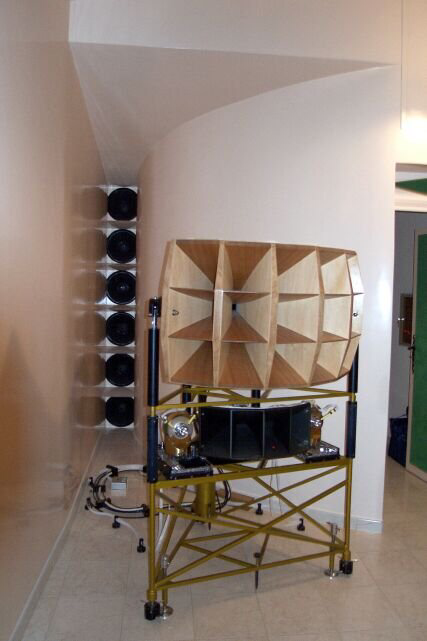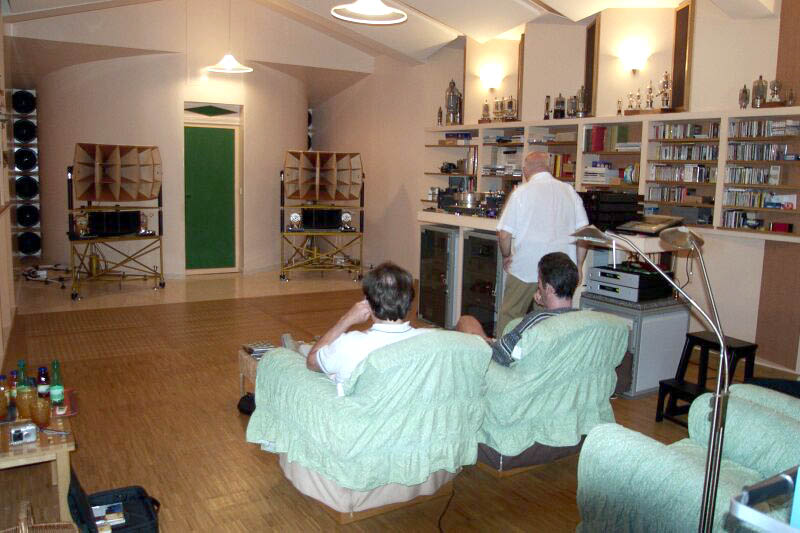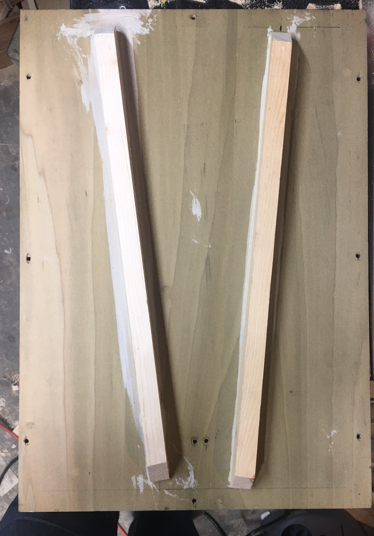
Pondoro
-
Posts
197 -
Joined
-
Last visited
Content Type
Forums
Events
Gallery
Posts posted by Pondoro
-
-
1 minute ago, MC39693 said:
As a hydrocarbon auditor for large complex sites, I loved it when the engineers would say to me “ It’s really complex, but believe us the math is right.” The math was right, the inputs were always wrong, hence the answers were ...
Never trust another engineer’s spreadsheet.
-
 1
1
-
-
Calculator prices plummeted and capability increased my senior year of high school. My dad bought an HP for $150 then eight months later bought me a TI for $30, the TI had one or two more functions. Two classic teacher comments:
1) You won’t have a calculator with you at the store!
2) The Russians will bomb Texas Instruments and no one will remember math.
I was a smart-a$#@ kid. Now after decades as a practicing engineer I realize that high school math teachers in the 1970’s loved arithmetic. Every trig problem required interpolation, which required one or two steps of long division. Engineers just want answers. Correct answers, but answers.
-
34 minutes ago, Bubo said:
You could move off and start a Tammy and Jim thread
or
My life as a Topless Bouncer😉
Be sure to keep the movie rights.....
Maybe a thread on odd career paths.
-
I agree, let's keep it essentially non-political. Neither the left nor the right want a bad economy, they just have wildly opposite ideas about how to make a good economy. I have political views but I still assume the "other side" wants good.
The price of plywood and hair gel have both skyrocketed. (I had to buy some hair gel for my wife a couple of days ago).
Let's argue about toe in. I've already made up my mind on tubes and cables.
Edit: Just visited a Klipsch Facebook page, they are
arguingdisagreeing about "grills on versus grills off", but doing it very politely. -
-
I saw the subject and thought you were talking about your wife. I have an awesome wife but she thinks Heresy's are too big, they are banished to the man cave.
-
 1
1
-
-
3 hours ago, Schu said:
sound boxes are not like speakers?
Brass Instruments are not like expanding horns?
Well, a guitar builder will tell you he designs his guitar to have a certain sound. A trumpet maker will say the same. The speaker designer will usually claim that their speaker box or horn are designed to perfectly imitate those instruments. The measurement freaks will claim that "well designed speakers have no inherent sound of their own!!!" But we all know that speaker designers cannot actually make "colorless" speakers and a few people actually admit that Klipsch (or other designers) have their own sound. None of that means the type of glue matters, and I personally doubt it has any effect. An unglued versus a glued box I could believe might sound different.
-
 1
1
-
-
The guitar and ukulele forums are full of controversy around hide glue versus Titebond. Both clearly work for musical instruments. Is Titebond inferior? I've built six ukuleles and about 30 drums with Titebond, they at least do not fall apart in the first ten years. Time will tell. I could become a "hide glue sounds superior" believer if I was also a violin player. I am not so I form no opinion about violins.
As a ukulele player and drummer I will tell you that all ukuleles and drums sound so different that I do not think I could detect glue sound.
Hide glue advocates can point to instruments that have survived hundreds of years and still hold together and can be repaired to "exactly new" condition. So there is that.
-
@mustang_flht Your English is very clear and effective. But keep posting, someday you will attempt to say, “My amp produces 20 watts” but you will actually propose marriage to someone. 😊
-
 1
1
-
 3
3
-
-
4 hours ago, mustang_flht said:
Hello everyone,
First thing: I agree with @Deang and others here: give it time and listen to some music and your Cornwall will have more bass
As a preamble, I must tell you that I am French so my English may not be subtle and I risk telling you things that are wrong and the opposite of what I think.
There are a few tips for increasing the bass and / or adapting the speaker setting to the room. You can in particular stopper with a cloth or felt napkin one of the three vents to tune the bass lower in frequency. there will be less level, but lower frequencies will be reproduced: for example 34Hz instead of 38Hz. this setting is for example often used for setting and tuning with the room for the famous Onken or Jensen loudspeakers.
The advantage of this trick is that it does not damage the speakers, you can do the test in 10 minutes, if you don't like it you remove the rags and it's over.
Onken with 2 blocked vents, in the case of Cornwall only 1 in 3 will be necessary, you can put the rags neatly without them protruding and you can put the fabric front again: it will be invisible.https://www.melaudia.net/zfoto/rueil1110/IMG_9307-800x533.jpg

This is a great and easy idea to try!
-
 1
1
-
-
12 minutes ago, garyeanderson said:
I plan on bracing a pair of Heresy speakers, but I plan on cutting new half inch plywood backs to brace and leave the originals as they were made so that I don't change/destroy what Klipsch designed. Plywood is still relatively cheap, you can also use a piece of 3/4 and let it stick out the back to stiffen the back too, then use a 1/4 inch round over bit so soften the edges and then use the original backs for transfer the holes for the screws (use longer screws or counter bore for the original ones). just a thought...
Gary
Not a bad plan. I saved a couple of bucks over your plan but your idea keeps the option of going back much more easily.
-
1 hour ago, KT88 said:
You always have a compromise. If you make the cabinet walls thicker or use a lot of braces, the time in which sound is stored could increase. This can manifest itself as time-smear and unmusical coloration. In the pdf link is an article from the year 1977 of the BBC research department. In figure 13 and 14 you can see that e.g. the double wall thickness sounds worse.
I will read this with great interest. Thanks!
I've heard people fight before, one person says, "I prefer the sound of wood cabinets" and a smart#$@$@ replies, "If you hear the cabinet then your sound is colored!" But you always hear the "system." I learned quickly with my drums that thicker walls do not always sound better.
-
More on bracing the back. Once again I remind you that there is no reason to do it in my opinion. But we are tinkerers. If you look at the 12 lowest modes of a panel in my previous post we do not know the exact frequency of any of them, but we know lower modes are easier to excite. To get exact frequencies we would need to know stiffness data for the plywood and I'll bet it is difficult to get. We would need to make assumptions about the stiffness of the screwed edges. People who design speakers for a living know this stuff, if they have analyzed and tested a lot of speakers. The other way to approach vibration is to "kill them all" (all the modes). Here is a picture of the braces I added to the back of my Heresy speakers. Each brace is 3/4" thick and 1" in depth. They are not perfectly symmetric on purpose. If you compare them to the modes pictured above they interfere with all of them. They interfere the least with 2,3 and 3,1. They interfere a lot with the entire top row and the first mode in row 2 (2,1). So they do attack the lowest modes. I braced the back of one speaker and then reassembled the speaker and tapped it. I tapped the unmodified back. The resonance of the braced back was a definitely higher, but not twice as high. This test only tells what happens when I tap the board, not what a speaker does. I played music, I could not tell one speaker from the other. I modified the second speaker. The wood came from my scrap bin, but I could have used it in a different project so it was not "free." I used glue and drywall screws. Total cost was maybe $2. I do not even know if total cost was $2 per speaker or total, it doesn't matter. Like I said, I could not hear any difference. If you tap the sides of your Heresy you will note that they are a lot stiffer than the back. I would not bother to stiffen the sides. There is no easy way to stiffen the motor board without using a lot of wood (as seen in the picture provided by someone else, who actually did it). I saw pictures of some larger speakers that Klipsch made using the same drivers. If I was desperate to improve my Heresy's I would build larger enclosures, copying whatever Klipsch did. I say this as a woodworker, there are other "Super Heresy" ideas that involve the electronics. But if all I had was a table saw and some plywood I would upsize he cabinets and make the motor board thicker, or make the back really thick (like 1.5") and run braces from the now really stiff back to the motor board. With the current price of plywood it may be better to just buy used Cornwalls.
-
 2
2
-
 1
1
-
-
I have a pair of H1's and I design stressed members for a living. I also build cajons, box drums about the size of a Heresy but much thinner. I have built about thirty wooden box drums and measured the frequencies of the sides and then sometimes braced the sides and measured the frequency again. I'm an expert in vibrating wooden rectangles.
That motor board is going to be flexible. Imagine it as a sheet of leather and you beat it like a drum, it will dish in and then belly out. It is thick, but they have removed a lot of material to make the holes. Now imagine that stiff metal woofer rim tied to a heavy magnet. The cone is what moves, the magnet will try to sit there. To visualize that put your 250 pound brother in law in a kid's wagon and let him shake a can of spray paint. Wait, the speaker is pushing on air. So let him sit in a wagon and wave a large fan. The wagon doesn't move much because brother in law is a lot heavier than the aerodynamic forces of the fan, and weighs a lot more than the thin vibrating fan. So now that thin motor board is tied to a circular shape that hates to move. The woofer just thrashes back and forth moving air. The air hits stuff in the room and might shake a wall so much that a picture rattles. Probably not, but maybe. That motor board doesn't really know what to do. It wants top flop in and out like a drum head, and it has been carved up and weakened. But that big magnet doesn't want to move much. The two horns are heavy and stiff and putting out much higher frequency vibrations. Those high frequencies are harder to vibrate along with. In the end a guy with a good computer could model the system and tell you that there are 12 or 16 vibrational modes in the low frequency spectrum. You'd like them all to be much higher frequency than 20,000 Hz but they will not be that high, I can tell you that by looking. But the mere existence of those modes does not mean they will become active. To understand which ones are active you build and test. PK built and tested in the 1950's, when the computers required to predict all of those vibrational modes did not exist. He built some and tested some and may have thickened or thinned some parts. In the end you hear the woofer and whatever sympathetic vibrations exist and the speaker made him happy. It did not make him as happy as Cornwalls or K Horns but he did not seem embarrassed to sell the Heresy speakers. So it sounds the way it sounded when PK quit improving it. As the photo of the stiffened motor board shows stiffening that motor board is not easy - there is nothing to tie it to. The backs are thin. I actually stiffened the back of my Heresy's and a tap test showed I had stiffened them a lot. The sound of the speaker did not change a bit as far as I could tell. I would not personally mess with stiffening the Heresy, my back stiffening experiment involved $2 worth of scrap wood and told me it was worth nothing too the sound. I have attached a picture of the panel modes of a plain rectangle. The front would be a lot more complex.
-
 1
1
-
 1
1
-
-
I think we have entered the region of fear buying. What if that stuff really does help? I might miss out!! Any of us with an older sibling has been teased when we were four or five - "There is an elephant in the front yard!" We knew big brother was lying but we were afraid not to look, what if we missed out? I was actually the oldest and perpetrated these things on my younger brother. One time my sister and I told him that there were "100 dancing cowboys" in a highway rest stop shelter. Thankfully I developed a conscience and have never sold $600 magic water to anyone.
-
 2
2
-
-
So 8:00 AM? Nice. Hopefully the neighbors aren’t too close. Twin Lakes, WI sounds rural.
-
To make grill boards Masonite is traditionally used. You can easily cut the rectangular outline. Getting the holes for the speakers correct is a pain. I bought an oscillating spindle sander and cut all the speaker holes too small, then I enlarged them. Even the smallest spindles won’t get into the square corners, you’ll need a file.
-
This is very useful!
-
 2
2
-
-
Swap with the 301’s to show that the wires and switch are ok?
-
I'll never buy a wireless-only speaker again. I had a Denon soundbar with a Bluetooth wireless subwoofer. Long story short they stopped talking to each other. No fix was available (I did cannibalize them). I've got some Klipsch powered speakers that I really like (R-51PM's) but my endgame is converting them to passive, I assume the drivers will outlast the electronics. And I can use Bluetooth, Optical, 3.5mm or USB to send them a signal. So there are some redundancies.
-
This might help you decide which driver is involved: https://onlinetonegenerator.com/
-
 1
1
-
-
I never noticed this and I use those same speakers and watch a lot of YouTube. I started out USB to USB, then switched to USB>DAC>Phono in, then switched to USB>DAC>Schiit Vali >Phono in. Following this because it interests me.
-
I've been wondering about this little guy and my Heresy speakers. This thread has about pushed me over the edge.
-
 2
2
-
-
I disagree, this is typical internet misinformation!






Did Klipsch use bone glue for Heritage models in the past?
in 2-Channel Home Audio
Posted
The use of hide glue versus PVA is very controversial in some corners of lutherie, approaching "tubes versus solid state" energy levels. I do not take a side. I've built several ukuleles, the oldest is ten years old. I do not have credibility in that argument. The experts have been using both types of glue for decades and repairing even older instruments. They are divided on which is best.